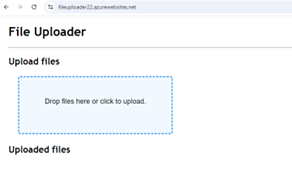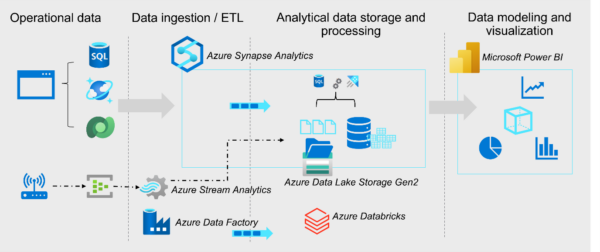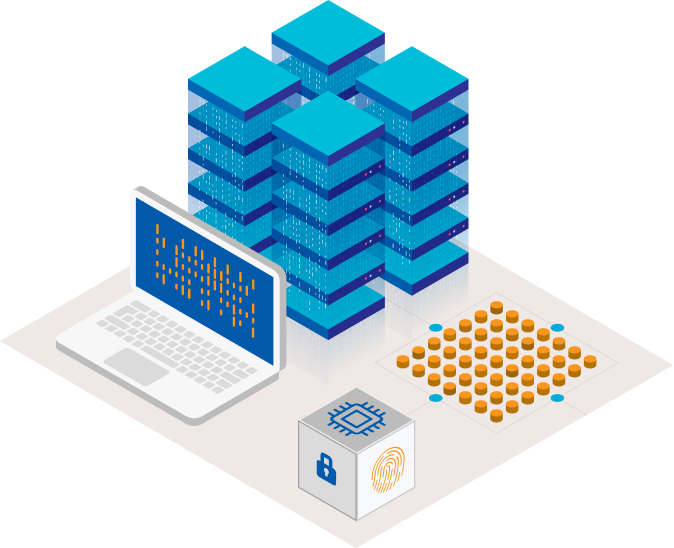When researching the DP-203 exam, one of the most common questions is: “Is it difficult?” I asked myself the same question when I began preparing for it. The answer? It depends. For me, it wasn’t just about earning a certification; I wanted to understand how to apply these skills effectively in real-world projects at Adaptiv.
Before diving into the study guide, let me share a bit about my background. As a recent graduate in Applied Technology – Computing, I was new to Azure services and real-world data projects. During my first week at Adaptiv, I was encouraged to start preparing for the DP-203 certification exam. It turned out to be an excellent suggestion because studying for this certification is one of the best ways to establish a strong foundation in data engineering. With the support and guidance of my team, I got hands-on experience applying what I was learning. I successfully passed the exam after two weeks of preparation.
For those dreaming of a career in data engineering but starting from scratch, like I did, let me assure you—it’s entirely possible to earn this certification with the right mindset, dedication, and a few study tricks. In this blog, I’ll share my personal journey, tips, and tricks to help you create your own study paths and clear the DP-203 exam. As I have been learning to apply these core concepts in our real-world projects, I can confidently say that the certification is very helpful to deliver meaningful data solutions for our clients.
What is the Azure Data Engineer Associate DP-203 exam?
The DP-203 certification is a Microsoft certification for professionals specialising in managing and optimising data systems on the Azure platform. It focuses on creating, securing, and maintaining scalable, compliant data solutions customised to organisational needs, using Azure technologies for analytics and data-driven decision-making.
The exam consists of 40-60 questions with two sections: general questions and a case study with multiple questions. It is important to read the instructions carefully. All the answers for general questions should be answered and reviewed before moving to the case study section since you cannot revisit the previous section.
The key skills assessed in the exam are:
- Design and implement data storage (15–20%)
- Develop data processing (40–45%)
- Secure, monitor, and optimise data storage and data processing (30–35%)
How to prepare for Azure Data Engineer Associate exam
While there are no prerequisites to take DP-203, it helps to have some foundational knowledge in Azure and programming languages like SQL and Python. Here’s a breakdown of what helped me prepare effectively.
Start with Azure Data Fundamentals (DP-900)
The DP-900 certification is a great starting point for understanding core data concepts and Azure data services and the following skills are covered.
-
- Describe core data concepts
- Identify considerations for relational data on Azure
- Describe considerations for working with non-relational data on Azure
- Describe an analytics workload on Azure
This certification is for the absolute beginners. Preparing for the DP-900 took me about two weeks and completing this certification helped me build a high-level understanding of how data is processed and stored on Azure.
Brush up on data processing languages
These languages can give you an edge in understanding Azure’s data engineering workflows.
-
- SQL: essential for tasks like extracting and transforming data, creating tables, and joining datasets.
- Python: useful for scripting, automation, and data transformation and integration
- Scala: powerful language for distributed data processing, with the Apache Spark framework
Follow the Microsoft Learning Path
When I was preparing for the DP-203 exam, I found that the key was choosing a study approach that suited me best. Self-paced learning paths, comprehensive modules, and instructor-led videos became my go-to resources for building a strong foundation. I dedicated my week completing these modules from Microsoft learning paths in the scope of Data Engineering on Microsoft Azure Course. The full course can be found here.
Practice Assessments and Hands-on Labs
In my second week, I focused on taking practice assessments. Check out Microsoft practice assessments. These helped identify gaps in my understanding and provided explanations for incorrect answers, along with links to relevant resources. Practice assessments and community discussions really helped me test my knowledge and clear up any doubts. It is always a great idea to revisit parts you find confusing to solidify your understanding and boost your confidence. Hands-on lab exercises from Microsoft Learn were incredibly effective in familiarising me with the processes and tools used in Azure data engineering. For instance, I completed an exercise where I deployed a simple file uploader web application that integrated with an Azure Blob Storage account. The task involved creating a storage account, configuring the blob container, and linking it to the web app for uploading and retrieving files. This exercise provided a practical understanding of how Azure services collaborate to solve real-world problems, like managing file storage in a scalable way.

Figure 1. File Uploader Web Application
These interactive labs are invaluable for building both knowledge and hands-on expertise. You can easily start by creating your Azure free account and following through the step-by-step tutorial guides from Microsoft learn.
Visualising Azure Data Engineering

Figure 2: Azure Data Engineering Flow (Source: Microsoft Learn)
Azure diagrams are useful for visualising how Azure solutions work and collaborate, making complex concepts easier to understand. An example such as Figure 2 illustrates the flow of data across different stages of an ELT/ETL process using Azure services. Operational data from sources like SQL databases and Cosmos DB is ingested using tools like Azure Data Factory and Azure Stream Analytics. It is then stored and processed with services such as Azure Data Lake Storage Gen2, Azure Synapse Analytics, and Azure Databricks. Finally, the data is modelled and visualised using Microsoft Power BI for insights and decision-making. Such visual aids simplify abstract concepts and help connect the dots between Azure’s tools and their real-world applications.
Final thoughts
Preparing for the DP-203 Azure Data Engineer Associate exam was the game-changer for me. It gave me the foundational knowledge needed to understand Azure’s powerful tools and services and the confidence to apply these skills to real-world projects. The hands-on labs and practical exercises from Microsoft Learn were a lifesaver, helping me connect the dots between theory and practice. They made it easier to see how Azure solutions work together to create scalable, data-driven results.
Microsoft recently announced that DP-203 certification and its renewal assessments will be retired on 31 March 2025, which may be disappointing news for many. However, I still believe it is worth sharing my DP-203 journey. Things I learnt from the DP-203 learning path not only prepared me for the exam but also helped my day-to-day work as a data engineer graduate at Adaptiv. I’m excited about solving challenging data problems and building impactful solutions, contributing effectively to projects, and collaborating with my team.
For anyone considering this exam, you can achieve this milestone and take your first big step forward in your data engineering journey. Start your DP-203 learning path, explore hands-on labs, and get ready to become an Azure-certified Data Engineer.
I’d love to hear about your learning journey and how you achieve this certification—share your story!







































